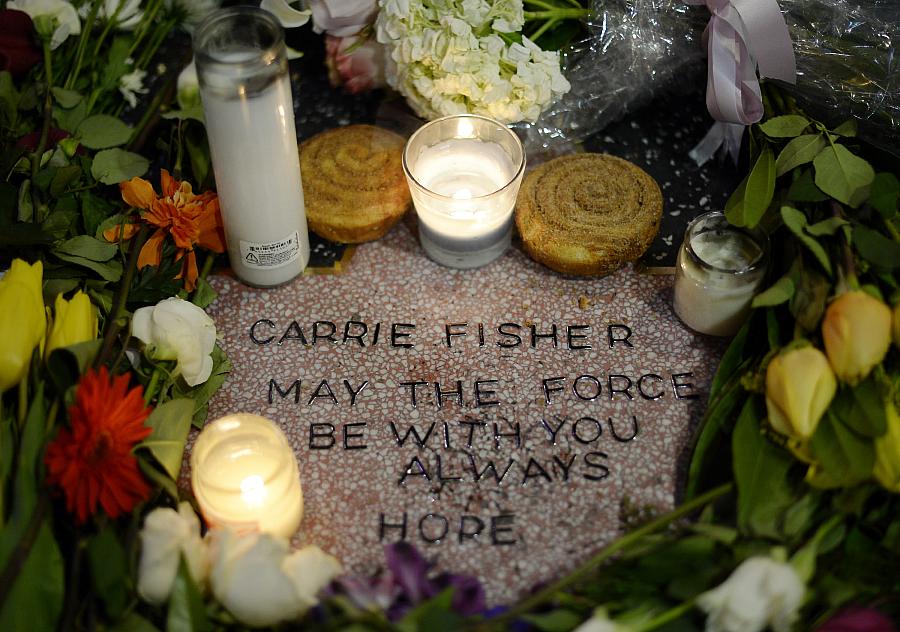Debbie Reynolds' death was another missed opportunity for the media to talk about strokes

Photo: Kevork Djansezian/Getty Images
Right after actress Carrie Fisher died of cardiac causes in Los Angeles, the news tickers and celebrity gossips sites crackled again. “Debbie Reynolds rushed to hospital with possible stroke!” gasped the headlines about her mother.
An interesting phenomenon occurred then. While Fisher’s onboard cardiac arrest and death triggered an avalanche of hastily assembled news blurbs about heart disease and its link to drugs (Fisher tweeted that she was an expert in cocaine use during the presidential debates), barely a Tweeter offered any useful information about stroke.
Instead, the media gathered around the idea of “broken heart syndrome.” Broken heart syndrome, or Takutsubo cardiomyopathy, is a poorly understood weakening of the heart wall in response to a sudden stressor. Can it lead to a stroke? Sometimes, and indirectly if so. But it was the romantic story, the mother-daughter story. Editors assigned it. Freelance health bloggers frantically called cardiologists for comment. Readers learned a lot about the cardiomyopathy that Reynolds may never have had in the first place. Who called up neurologists to ask how to recognize or prevent a stroke? Practically no one.
Stroke is the ugly stepsister to heart disease. Heart attacks are dramatic and binary; as seen on TV, they’re either instantly fatal or heroically surmountable, whether by a speedy interventional cardiologist or a handsome fireman performing CPR. Survivors without severe heart damage can grin, say “Doc, thanks for saving my life!” and go back to work. The regular presence of heart disease survivors among us makes the disease more real, as do colloquialisms like “heart attack on a plate” for a cheeseburger or “You’re gonna give me a coronary!”
Strokes are messy. They leave patients disabled, forgetful, blind, incontinent, or mute. They can be disfiguring. Stroke patients often don’t end up back at the office high-fiving Jimmy from accounting after getting out of the hospital. They may languish in nursing homes or endure months or years of difficult physical and speech therapy. Women also suffer from strokes at higher rates than men; “men’s diseases” sometimes get more press and more research attention than do diseases associated with women. Yet stroke is also the fifth biggest cause of death in the United States, and it deserves far more in the way of media attention and public education efforts.
Now that Reynolds’ death certificate has been published, the TMZs and Page Sixes have granted her true cause of death — hemorrhagic stroke due to high blood pressure — only a whisper of attention. They have moved on to the latest celebrity topic of the day. Meanwhile, in the time it took you to read this article, someone in the U.S. died of a stroke, possibly a preventable one.
It is a shame that the media did not take this opportunity to educate audiences. They could have done so by mentioning a few basic facts about stroke in their coverage:
1) Stroke is the leading preventable cause of disability.
2) Women can have unusual symptoms of a stroke, including: pain, agitation, hallucinations, or hiccups. (Men can have these as well.) Unusual symptoms can lead to a delay in diagnosis.
3) High blood pressure is the number one cause of stroke.
4) Women are more likely to have a poor outcome after a stroke than men.
5) African-Americans are nearly twice as likely to have strokes as white people.
I myself have diagnosed an unacceptable number of strokes, weeks or months after the fact, in patients who didn’t even realize what had happened. The goal of public health officials and health care journalists should be a significant increase in the public’s awareness and recognition of stroke. This could result in an immense reduction in disability, death, and health care spending.
